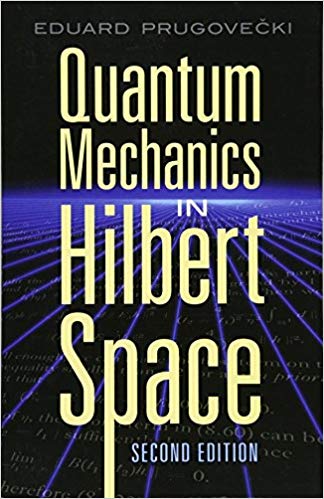Copies of the class notes are on the internet in PDF format as given below. These notes have not been classroom tested and may contain typographical errors. The "Proofs of Theorems" files were prepared in Beamer. The "Printout of Proofs" are printable PDF files of the Beamer slides without the pauses.
Preface and Introduction.
Chapter I. Basic Ideas of Hilbert Space Theory.
- Section I.1. Vector Spaces. Section I.1
- Section I.2. Euclidean (Pre-Hilbert) Spaces. Section I.2
- Section I.3. Metric Spaces. Section I.3 (Includes a proof that every metric space can be embedded in a complete metric space.)
- Section I.4. Hilbert Space. Section I.4 (Includes a proof of the Fundamental Theorem of Infinite Dimensional Vector Spaces.)
- Section I.5. Wave Mechanics of a Single Particle Moving in One Dimension. Section I.5
- Study Guide 1.
Chapter II. Measure Theory and Hilbert Spaces of Functions.
- Section II.1. Measurable Spaces. Section II.1
- Section II.2. Measures and Measure Spaces (Partial). Section II.2
- Section II.3. Measurable and Integrable Functions.
- Section II.4. Spaces of Square-Integrable Functions.
- Section II.5. The Hilbert Space of Systems of n Different Particles in Wave Mechanics.
- Section II.6. Direct Sums and Tensor Products of Hilbert Spaces.
- Section II.7. The Two-Body Bound-State Problem with a Spherically Symmetric Potential.
- Study Guide 2.
Chapter III. Theory of Linear Operators in Hilbert Spaces.
- Section III.1. Linear and Antilinear Operators on Euclidean Spaces.
- Section III.2. Linear Operators in Hilbert Spaces.
- Section III.3. Orthogonal Projection Operators.
- Section III.4. Isometric and Unitary Transformations.
- Section III.5. Spectral Measures.
- Section III.6. The Spectral Theorem for Unitary and Self-Adjoint Operators.
- Study Guide 3.
Chapter IV. The Axiomatic Structure of Quantum Mechanics.
- Section IV.1. Basic Concepts in the Quantum Theory of Measurement.
- Section IV.2. Functions of Compatible Observables.
- Section IV.3. The Schroedinger, Heisenburg, and Interaction Pictures.
- Section IV.4. State Vectors and Observables of Compaound Systems.
- Section IV.5. Complete Sets of Observables.
- Section IV.6. Canonical Commutation Relations.
- Section IV.7. The General Formalism of Wave Mechanics.
- Section IV.8. Completely Continuous Operators and Statistical Operators.
- Study Guide 4.
Chapter V. Quantum Mechanical Scattering Theory.
- Section V.1. Basic Concepts in Scattering Theory of Two Particles.
- Section V.2. General Time-Dependent Two-Body Scattering Theory.
- Section V.3. General Time-Independent Two-Body Scattering Theory.
- Section V.4. Eigenfunction Expansions in Two-Body Potential Scattering Theory.
- Section V.5. Green Functions in Potental Scattering.
- Section V.6. Distorted Plane Waves in Potential Scattering.
- Section V.7. Wave and Scattering Operators in Potential Scattering.
- Section V.8. Fundamental Concepts in Mulitchannel Scattering Theory.
- Study Guide 5.
Return to
Bob Gardner's home page



